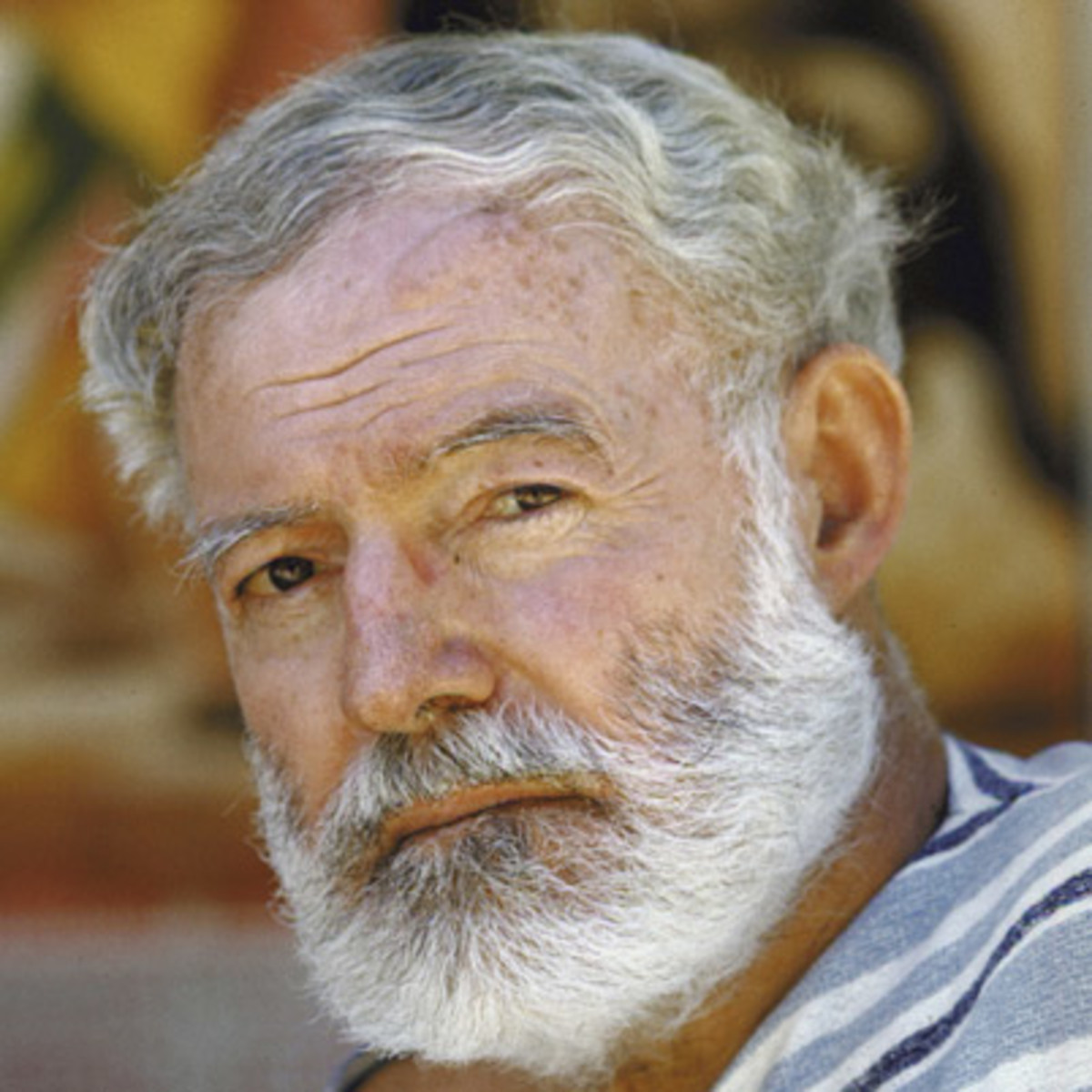
Ernest Hemingway
Biography
Born on July 21, 1899, in Cicero (now in Oak Park), Illinois, Ernest Hemingway served in World War I and worked in journalism before publishing his story collection In Our Time. He was renowned for novels like The Sun Also Rises, A Farewell to Arms, For Whom the Bell Tolls, and The Old Man and the Sea, which won the 1953 Pulitzer. In 1954, Hemingway won the Nobel Prize. He committed suicide on July 2, 1961, in Ketchum, Idaho.
Childhood
Ernest Miller Hemingway was born in Oak Park, Illinois, on July 21, 1898. His father was a country physician who taught his son hunting and fishing; his mother was a religious woman, active in church affairs, who led her son to play the cello and sing in the choir. Hemingway's early years were spent largely in fighting the feminine influence of his mother while feeding off the influence of his father. He spent the summers with his family in the woods of northern Michigan, where he often accompanied his father on professional calls. The discovery of his father's apparent lack of courage, later depicted in the short story "The Doctor and the Doctor's Wife," and his suicide several years later left the boy with an emotional scar.
Despite the intense pleasure Hemingway took from outdoor life and his popularity in high school—where he distinguished himself as a scholar and athlete—he ran away from home twice. However, his first real chance for escape came in 1917, when the United States entered World War I (1914–18; a war in which forces clashed for European control). Eager to serve his country in the war, he volunteered for active service in the infantry (foot soldiers) but was rejected because of eye trouble.
Hemingway then enlisted in the Red Cross medical service, driving an ambulance on the Italian front. He was badly wounded in the knee yet carried a wounded man on his back a considerable distance to the aid station. After having over two hundred shell fragments (parts of bullets) removed from his legs and body, Hemingway next enlisted in the Italian infantry, served on the Austrian front until the armistice (truce), and was decorated for bravery by the Italian government. Hemingway soon returned home where he was hailed as a hero.
Works
Hemingway returned to the United States in 1926 with the manuscripts of two novels and several short stories. That May, Scribner's issued Hemingway's second novel, The Sun Also Rises. This novel, the major statement of the "lost generation," describes a group of Americans and Englishmen, all of whom have suffered physically and emotionally during the war.
In December 1929 A Farewell to Arms was published. This novel tells the story of a tragic love affair between an American soldier and an English nurse set against the backdrop of war and collapsing world order. It contains a philosophical expression of the Hemingway code that man is basically helpless in a violent age: "The world breaks everyone," reflects the main character, "and afterward many are strong in the broken places. But those that it will not break it kills. It kills the very good and the very gentle and the very brave impartially. If you are none of those you can be sure that it will kill you too, but there will be no special hurry."
Hemingway revealed his passionate interest in bull-fighting in Death in the Afternoon (1932), a humorous and unique nonfiction study. Hemingway's African safari in 1934 provided the material for another nonfiction work, The Green Hills of Africa (1935), as well as two of his finest short stories, "The Short Happy Life of Francis Macomber" and "The Snows of Kilimanjaro."
In 1940 Hemingway published For Whom the Bell Tolls, his most ambitious novel. A wonderfully clear narrative, it is written in less lyrical and more dramatic prose (nonpoetry writing) than his earlier work.
In 1952 The Old Man and the Sea was published. A novella (short novel) about an extraordinary battle between a tired old Cuban fisherman and a giant marlin, it was immediately hailed as a masterpiece and was awarded the Pulitzer Prize in 1953. A year later, Hemingway won the Nobel Prize for Literature.
